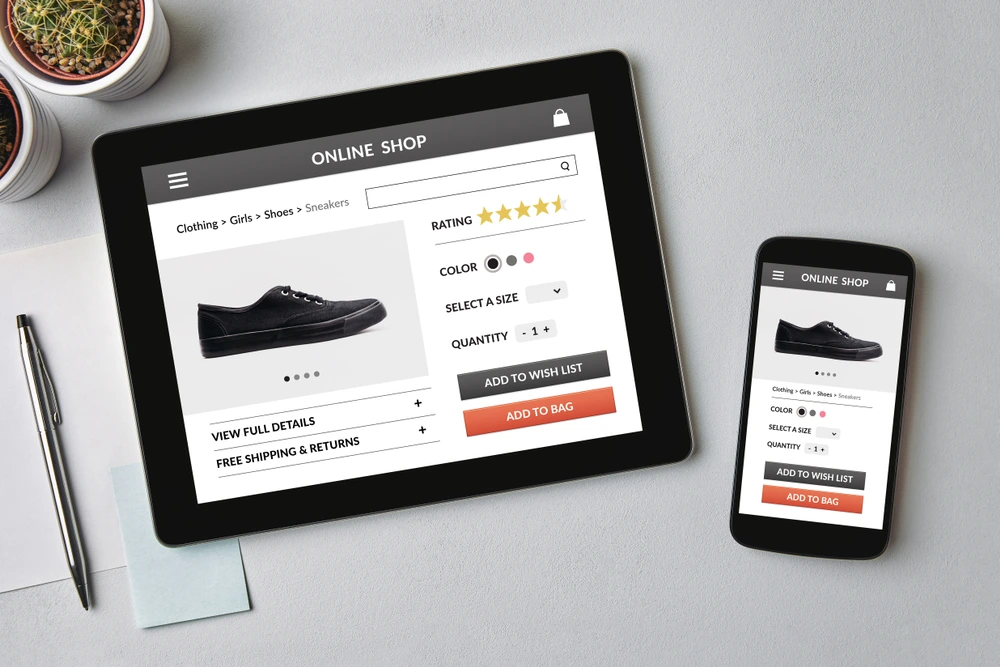Customers are looking for companies that make their shopping experiences seamless and emotionally engaging. Likewise, companies know that every interaction a customer has with their brand needs to be consistent and enjoyable and it is necessary to provide a good experience with excellent shopping features.
Often, this leads companies to focus on consistent messaging, personalization and channel integration as their primary optimizations to the shopping experience.
These advances are great for business, but sometimes miss lower-hanging fruit in pursuit of those upgrades. Specialty ecommerce shopping features — often already built into your platform — are simple and effective ways to strengthen your customer relationships.
Here are seven to consider.
1. Flash Sales for Engagement
Flash sales typically last less than 24 hours, sometimes even shorter. They draw customers in because these discounts create a sense of urgency — customers have to act quickly to take advantage of deals that they might miss out on.
Flash sales are practical for businesses when overstocked items are not selling quickly enough. Businesses can use this inventory challenge as an opportunity to give customers an exciting emotional experience, which helps build brand awareness and engagement.
New and enticing sales like these can be a way to re-engage dormant email subscribers. In fact, 74% of businesses see higher click-to-open rates from flash sale emails, making them a great way to shake the dust off your standard marketing approach.
To build brand awareness and connection with customers, flash sales must be executed well.
Here are some key insights to keep in mind when designing an effective flash sale:
- Set goals as the foundation of the sale. Which items do you most want to reduce in inventory, or which target audience do you want to connect with?
- Keep the sale simple. Offer a discount on one particular item or category of items.
- Evaluate the competition. Is your pricing comparable?
- Weigh the pros and cons. Were there any negative effects that came as a result of your last flash sale?
Some businesses have built their entire business models around flash sales. Bogdan Rancea, founding member of Inspired Mag, says this is a mistake and has been the downfall of several ecommerce businesses. A short-term increase in sales does not equal long-term profitability. Companies must use flash sales sparingly; engage customers, but don’t treat this tactic as the foundation of the relationship.
2. Social Shopping for New Levels of Reach
Social shopping is where ecommerce meets social media in a practical way for consumers. This channel is an emerging way to streamline social media marketing material and consumers’ desire for an efficient shopping process.
Accenture calls social commerce a “democratising force” that opens up new opportunities for both individual entrepreneurs and small business owners. Case in point: 59% of social buyers say they’re more likely to buy from a small business if they use a social commerce platform rather than shopping from their website online.
Different social platforms offer different shopping features that companies can integrate with their stores. Instagram released its ecommerce shopping features in 2017 and quietly added a native payment feature. Now, users do not have to leave the platform to make a purchase. This technology has huge potential to enhance a consumer’s immersive shopping experience.
Social media already impacts how consumers make purchases, so it is unsurprising that social commerce is expected to reach 1.2 trillion $USD by 2025.
Sig Ueland at Practicalecommerce also thinks that social shopping is becoming more widely accepted among consumers. He points to the luxury social commerce platform Threads, which raised $20 million last year, as an indicator of where ecommerce and social media are heading.
Integrating social media and ecommerce only seems like a natural progression of how consumers interact with a brand’s various touchpoints.

3. Wish Lists and Save-For-Later Capabilities
Wish lists are common features for ecommerce stores. Still, many brands underestimate their ability to add value to a customer’s experience.
Wish lists — and save-for-later features in general — differ from cart items because shoppers know they are not ready to buy the wish listed items yet. These are “maybe someday” purchases that the customer can come back to when they want to mull the decision or perhaps ultimately buy.
David Hoos, Director of Marketing at The Good, writes that the wish list should be taken seriously as part of your marketing and design strategy. This feature can boost shopping experiences and be used for marketing research. To implement a wish list feature effectively, it must be simple and enjoyable for consumers to use.
Wish lists are also popular because they are a way for consumers to share desired items with friends and families. This can come in handy around holiday seasons or when consumers celebrate special occasions.
4. Gift Registries
Gift registries are a perfect way to engage with customers during exciting moments of their lives — weddings, babies on the way, graduations, etc.
Connecting with customers on an emotional level is one of the most effective ways to build a larger customer base. In fact, registry brands like Babylist and Joy have seen explosive growth over the past few years, even as Amazon continues to dominate the registry market.
If customers are already excited to be getting married or moving into a new home, why not use gift registries as a tool to be a memorable part of customers’ happy moments?
This feature is also a great way to encourage customer advocacy. When a customer uses a gift registry, they are saying to friends and family members that they align themselves with your brand and what that brand stands for. A socially conscious couple might choose a fair trade registry platform, or a couple with especially sophisticated taste might request gifts from Harrods.
Gift registries are an opportunity for you to walk with customers during special moments. If they choose your brand to help facilitate these happy moments, it sends a message to their communities that your company is valuable.
5. Product Comparison Charts
Product comparison charts are another feature that can make customer experiences more seamless. They allow customers to see different products while adding meaning to more technical features. Charts can help customers, often paralyzed by too many options, narrow in on products that most fit their needs.
Product comparison charts are one effective way to make the buyer journey easier. Customers who might not know which similar products to consider in the first place are presented with a few popular options. This helps them identify which features they value most and explore which products will fit their needs.
Companies implement these charts differently. Fitbit allows customers to select the top features they are looking for in their ideal fitness watch and then lets them select the devices they want to compare from the devices that fall into those categories. Apple lists their Mac models on one page. To narrow the list, customers can select two different models to compare side by side.
Above all, the formatting should be clear and simple. Bulleted lists read easier than wordy explanations. The differences between products should be clearly marked and made easier for the customer to understand.
Comparison charts are especially useful for customer journeys when customers are comparing high-ticket items. Unless customers are going off social recommendations and know what they want right away, they will need to put a lot of thought and research into big purchases.
That is why comparison charts are useful for improving the customer experience. They put all the important details customers want to know about different products in one clear, comprehensive list. Small improvements to the customer experience ultimately lead to improved customer loyalty.
Improved customer loyalty, in turn, is sure to solidify customer relationships.
6. Buy Now, Pay Later (BNPL)
The popularity of buy now, pay later (BNPL) shopping features exploded in the COVID-19 era, and they are only continuing to gain momentum as the pandemic fades into history.
One survey reported that 60% of respondents used BNPL service during the pandemic, with the service being most common among consumers ages 18-24 and 35-44.
These options make online shopping more convenient and accessible than ever, allowing consumers to make purchases they might not be able to afford in other circumstances. (It makes sense, then, that the feature gained popularity at a time of economic uncertainty.)
Nearly 45% of consumers say they have used BNPL to make purchases that would otherwise be out of their budget, with the majority of shoppers using the feature to buy clothing or electronics. Still, BNPL is gaining popularity in other ecommerce categories, too: 32% of consumers used BNPL to buy furniture, 29% to buy appliances, and 23% to buy housewares.
7. Buy Online, Pick-Up In Store (BOPIS)
In the height of the pandemic, consumers were looking for alternate, safer ways to shop. Enter: Buy Online, Pick-Up In Store (BOPIS). This service provided a quick and convenient way for customers to get essentials like groceries, clothing, and more without spending time wandering a store and mingling with other customers and employees.
BOPIS and click-and-collect services grew by 106.9% from 2019 to 2020, with stores like Walmart, The Home Depot, Best Buy and Target dominating the industry. The trend is expected to continue to grow among midsize retailers and digital buyers, with BOPIS sales predicted to hit 140.96 billion $USD by 2024.
Even businesses that do not have retail locations can get in on the action. Some ecommerce brands are offering shopping features like secure lockers, curbside pickup spots, and in-store kiosks for shoppers seeking speed and convenience.
Grow Your Ecommerce Brand with ESW
Offering these specialty ecommerce shopping features can be the first step to strengthening customer relationships and growing your business.
But if you are looking for sustained growth, a safe, secure, streamlined ecommerce platform is of the utmost importance. ESW can empower your brand to make global shopping better, safer, simpler and faster.
Contact ESW today to learn how we can improve your data security, fraud protection, returns, customer service and more.





